Add Instances to Dataflow Blocks
You can create a new instance with the Add New Instance command ans set the different parameters of the instance.
Click Add New Instance
 in the Block Tools toolbar and click any
block above the current one. Then, click the sheet to
locate the new instance.
in the Block Tools toolbar and click any
block above the current one. Then, click the sheet to
locate the new instance.
In the example below, the block
Counter has been instantiated in the current block
Block.

Double-click the block in the viewer
to open the Instances Properties dialog box.
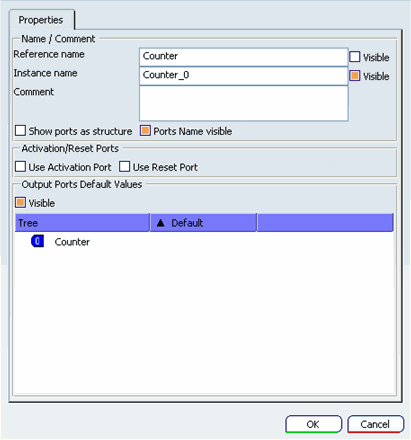
Name/Comment
Reference Name: This
field contains the name of the block.
Instance Name: You
can change the name of the instance by filling this
field.
Visible: You can
choose to display the block name or its instance
name in the viewer.
Comment: The comment
of the block is displayed in a tool tip when you
move the mouse over the instance.
Ports Name Visible:
You can hide the name of the ports in the viewer
by unselecting this box.
Activation/Reset
Ports
Use Activation Port:
When selected, this option gives the block instance
an input port (green, on the top left) that has
to be connected in the diagram with a port propagating
a Boolean expression. If the expression is true
the instance is de-activated. If it is false the
instance is executed.
Use Reset Port: When
selected, this option gives to the block instance
an entry port (black, on the top right) which is
connectable in the diagram with a port propagating
a Boolean expression. If the expression is true,
the instance is reset (that means that the output
is the value of the Init port).
Output Ports Default Value
Visible: You can
display the default value of the output ports in
the viewer by checking this box.
Default: You can
fill a default value. Default values are emitted
as long as the block has never been activated (see
Activation above).

Add Instances to SFC+ Blocks
You can create an instance from a SFC block, the same way as a Dataflow block. Only one parameter is different the option Automatic Run only available for SFC+ block.
Change the kind of the current block
to SFC+.
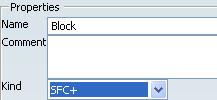
Click OK.
In the viewer, double-click the
Counter block to review its properties.
The option Automatic Run
becomes available in the section Activation / Reset
Ports.

Automatic Run means that
the instance is run automatically as long
as the current block is active.
If Automatic Run is disabled,
the run of the instance must be added to the SFC+ graph (refer to Run Actions). In the editor, instances not set in Automatic Run are identified by a yellow tab at the bottom right corner.


Add Parameterized Instances
If parameters are defined in the block to instantiate, the parameter's values must be defined at the instantiation.
The Block Editor workbench should be opened. At least one parameterized block must be defined, and positioned above the current one in the specification tree
Click Add New Instance
 in the Block Tools toolbar and click the parameterized
block above the current one. Then, click the sheet to
locate the new instance.
in the Block Tools toolbar and click the parameterized
block above the current one. Then, click the sheet to
locate the new instance.
The Instances Properties dialog box appears.
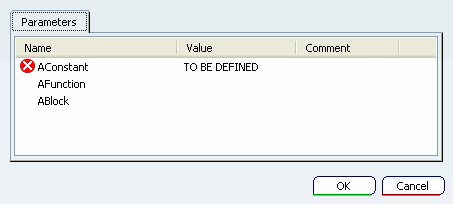
- If no default value is defined for a parameter, it appears in error.
- If a default value is defined, the field Value is empty.
Double-click the label TO BE DEFINED and provide a value for the parameter.
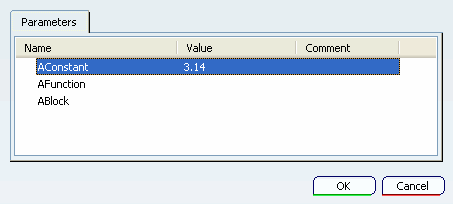
You can redefine the value of a parameter having a default value.
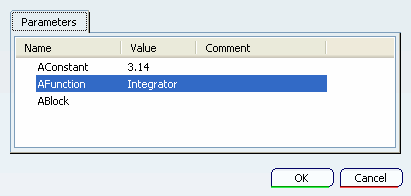
You can add a comment to each parameter.
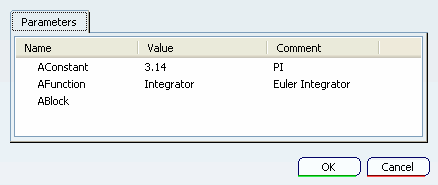
Click OK. The instance of the parameterized block is added to the blank page.
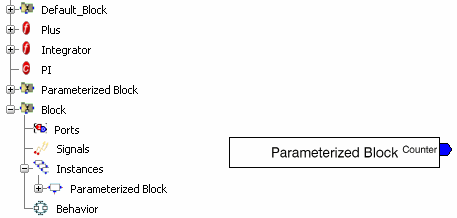
Double-click the block in the viewer
to open the Instances Properties dialog box. - In the Parameters tab, you can redefine the value of the parameters.
- In the Properties tab, you can redefine the instance parameters described in the previous tasks.
|
![]()
![]()









